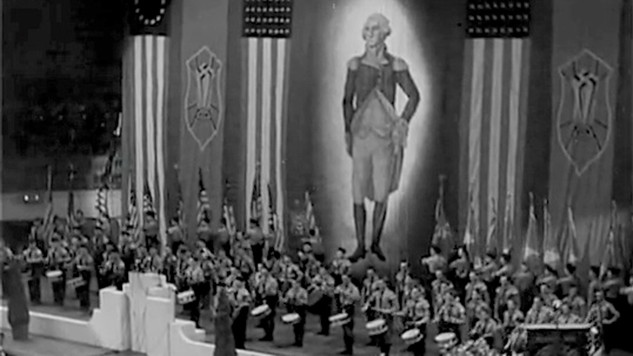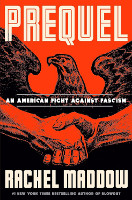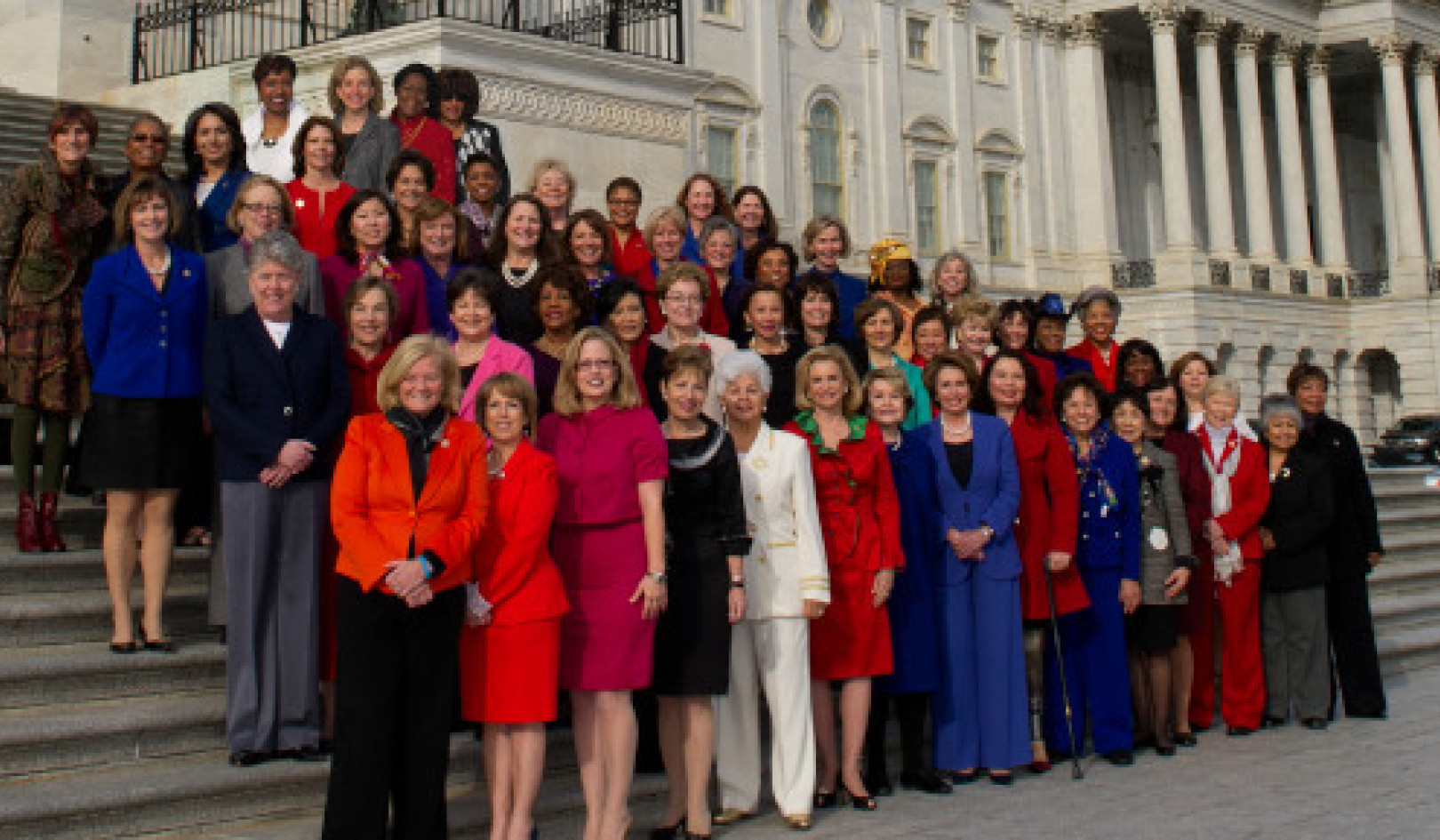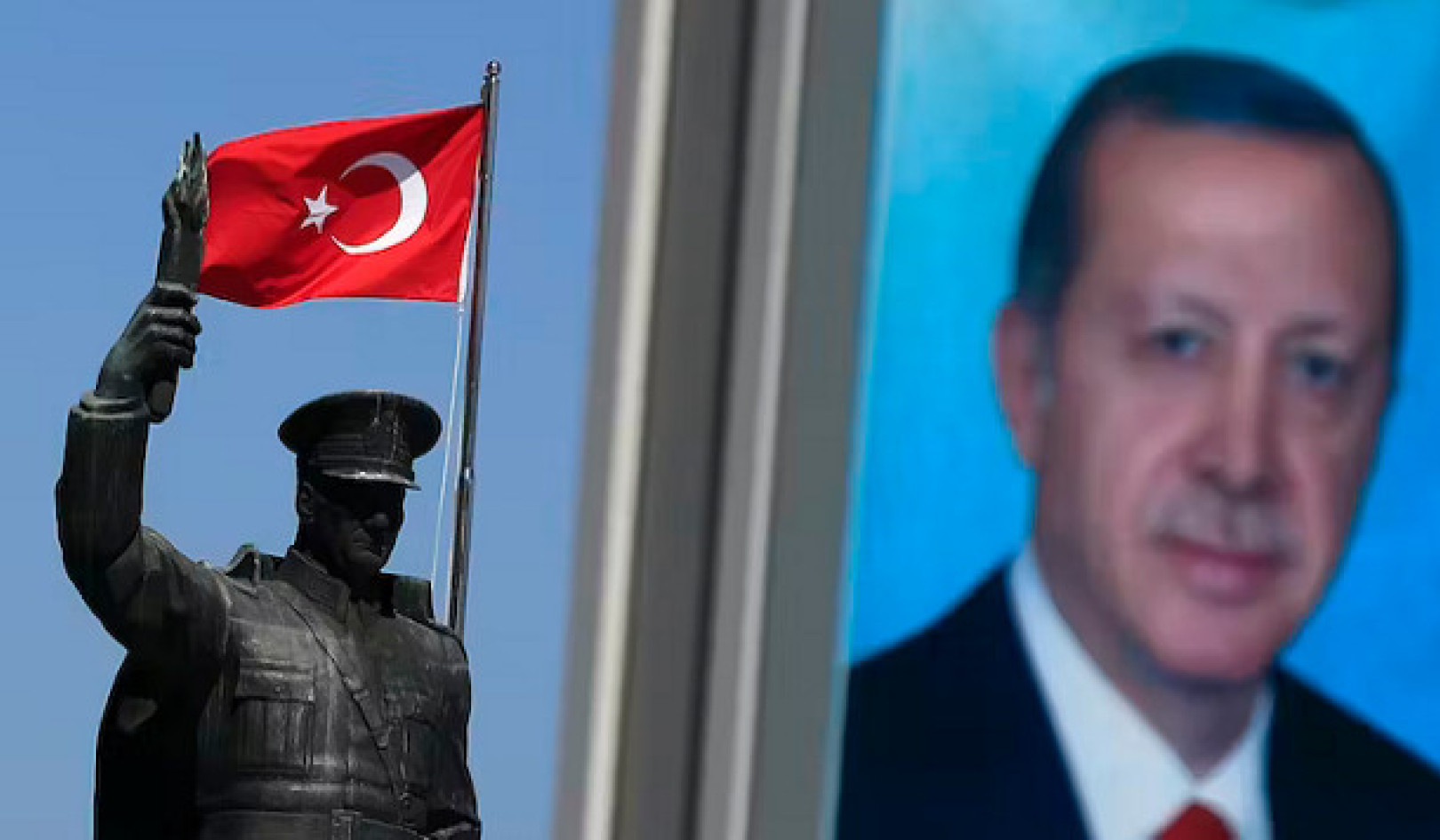
In 1939, Madison Square Garden in New York City was the venue for a rally of 20,000 individuals expressing support for Nazi ideologies, featuring Nazi symbols alongside an image of George Washington.
The decade of the 1930s was a tumultuous period that shaped the course of modern history, marked by the ominous rise of fascism. It is a common belief that the tendrils of this political ideology were tightly coiled around the hearts and policies of Europe, particularly in Germany and Italy. However, an unsettling truth lies within the historical tapestry of the United States—a truth wherein thousands of Americans once gathered beneath the stern gaze of George Washington’s image, not to celebrate the values of democracy but rather to extol the virtues of Nazism American soil.
A Gathering Storm in America's Metropolis
Madison Square Garden, the iconic venue known for sports and spectacles, was transformed into an arena of swastikas and Sieg heils. This was the reality in 1939 when about 20,000 individuals rallied in support of Nazi principles. The stark contrast between the American iconography and the fascist symbols that night serves as a profound reminder of the complex, often contradictory currents within American society.
Underground Networks and Unlikely Allies
The layers of this dark chapter extend beyond public gatherings; they seep into the underground where anti-Semitic groups, like the Silver Shirts and the Christian Front, conspired in the shadows. These groups not only shared ideologies with Hitler’s regime but also mobilized in clandestine cells across the nation, plotting violence and upheaval. Their presence was a chilling embodiment of the reach and influence that fascist ideology had managed to extend within the United States.
Perhaps one of the most harrowing revelations involves the Christian Front's plot to unleash terror upon New York City—a plan foiled mere days before its execution. The discovery of stockpiled bombs intended for a campaign of assassination and destruction exposes the extent to which these groups were willing to go to transplant the seeds of fascism onto American soil.
The subsequent trials of those charged with seditious conspiracy and theft of government property concluded with a series of acquittals that spoke volumes about the societal undercurrents of the time. Maddow reflects on how rabid anti-Semitism was paradoxically intertwined with a warped sense of patriotism and anti-communism, revealing the complex interplay of ideologies that characterized pre-war America.
Disinformation: A Historical Precedent
Long before the era of social media, disinformation campaigns were already at play, with clubs like the Harmonie Club becoming the target of fabricated conspiracies designed to sow discord and hatred. Such historical instances underscore the potency of falsehoods in manipulating public perception—a tactic not unfamiliar in today's political landscape.
The infiltration of Nazi propaganda into the halls of the U.S. Congress unveils the depths of the connections between American lawmakers and the fascist agenda. Maddow’s investigation reveals how propaganda was laundered through the legitimacy of congressional records, highlighting the vulnerability of democratic institutions to manipulation.
As Maddow digs deeper, she uncovers an unsettling alliance between U.S. Senators, Representatives, and Nazi sympathizers. The eventual indictment of key figures in this network, while a step toward justice, was ultimately stymied by a combination of legal pressures and a trial that ended abruptly with the untimely death of a judge. This fiasco reflected the era's entanglement of politics and extremist ideologies and the difficulties in extricating the two.
Prequel to Our Present: The Lessons Unlearned
Drawing parallels between the historical context of her book and the recent surge in ultra-right activities, Maddow posits that the signs of a democracy in distress are again emerging. The intrusion of violence into politics, the vilification of minorities, and a resurgence of anti-Semitism are stark indicators that echo the pre-war period's warning signs. Her insights are a poignant reminder of history’s propensity to recur when its lessons are ignored or forgotten.
As we revisit the rise of fascism through Maddow's lens, we confront a narrative that is not just a relic of the past but a mirror reflecting our present struggles with extremism and the defense of democratic ideals.
Prequel: An American Fight Against Fascism
 In the podcast "Ultra," Rachel Maddow brings to light a harrowing piece of American history that many of us might not recognize—one where the seeds of authoritarianism were sown on the homefront even as the nation rallied against the Axis powers abroad. Her #1 New York Times Bestseller doesn't just trace the origins of this movement; it highlights the courage of a few steadfast individuals who stood against the tide. These public servants and private citizens battled against a covert and dangerous campaign that aimed to pull the United States into an alliance with Nazi Germany. Maddow presents this struggle to protect American democracy as a riveting narrative, painting a picture that resonates with today's political climate, showing how the shadows of the past still loom over the present.
In the podcast "Ultra," Rachel Maddow brings to light a harrowing piece of American history that many of us might not recognize—one where the seeds of authoritarianism were sown on the homefront even as the nation rallied against the Axis powers abroad. Her #1 New York Times Bestseller doesn't just trace the origins of this movement; it highlights the courage of a few steadfast individuals who stood against the tide. These public servants and private citizens battled against a covert and dangerous campaign that aimed to pull the United States into an alliance with Nazi Germany. Maddow presents this struggle to protect American democracy as a riveting narrative, painting a picture that resonates with today's political climate, showing how the shadows of the past still loom over the present.
This isn't a simple tale of good versus evil from dusty history books; it's a complex saga where influential leaders and clandestine groups pushed the nation towards fascism, wielding disinformation as their weapon to weaken the U.S. war effort. The plotters of this sophisticated attack on democratic values were not fringe extremists but rather a coalition that included some of the nation's most influential figures. They aimed to erode trust in the government, fuel antisemitism, and prepare for violent upheaval. Maddow meticulously charts how this movement worked hand-in-glove with an ultra-right paramilitary group ready for armed rebellion and how a brave few worked tirelessly to uncover this conspiracy. Influenced by political pressure, the ensuing legal battles serve as a stark reminder of how fragile the rule of law can be—and the lasting impact of that period, as the tendrils of a once-thwarted authoritarian ambition continue to reach through the fabric of American life.
About the Author
 Robert Jennings is co-publisher of InnerSelf.com with his wife Marie T Russell. He attended the University of Florida, Southern Technical Institute, and the University of Central Florida with studies in real estate, urban development, finance, architectural engineering, and elementary education. He was a member of the US Marine Corps and The US Army having commanded a field artillery battery in Germany. He worked in real estate finance, construction and development for 25 years before starting InnerSelf.com in 1996.
Robert Jennings is co-publisher of InnerSelf.com with his wife Marie T Russell. He attended the University of Florida, Southern Technical Institute, and the University of Central Florida with studies in real estate, urban development, finance, architectural engineering, and elementary education. He was a member of the US Marine Corps and The US Army having commanded a field artillery battery in Germany. He worked in real estate finance, construction and development for 25 years before starting InnerSelf.com in 1996.
InnerSelf is dedicated to sharing information that allows people to make educated and insightful choices in their personal life, for the good of the commons, and for the well-being of the planet. InnerSelf Magazine is in its 30+year of publication in either print (1984-1995) or online as InnerSelf.com. Please support our work.
Creative Commons 4.0
This article is licensed under a Creative Commons Attribution-Share Alike 4.0 License. Attribute the author Robert Jennings, InnerSelf.com. Link back to the article This article originally appeared on InnerSelf.com

Related Books:
On Tyranny: Twenty Lessons from the Twentieth Century
by Timothy Snyder
This book offers lessons from history for preserving and defending democracy, including the importance of institutions, the role of individual citizens, and the dangers of authoritarianism.
Click for more info or to order
Our Time Is Now: Power, Purpose, and the Fight for a Fair America
by Stacey Abrams
The author, a politician and activist, shares her vision for a more inclusive and just democracy and offers practical strategies for political engagement and voter mobilization.
Click for more info or to order
How Democracies Die
by Steven Levitsky and Daniel Ziblatt
This book examines the warning signs and causes of democratic breakdown, drawing on case studies from around the world to offer insights into how to safeguard democracy.
Click for more info or to order
The People, No: A Brief History of Anti-Populism
by Thomas Frank
The author offers a history of populist movements in the United States and critiques the "anti-populist" ideology that he argues has stifled democratic reform and progress.
Click for more info or to order
Democracy in One Book or Less: How It Works, Why It Doesn't, and Why Fixing It Is Easier Than You Think
by David Litt
This book offers an overview of democracy, including its strengths and weaknesses, and proposes reforms to make the system more responsive and accountable.



























